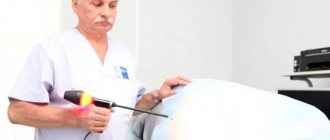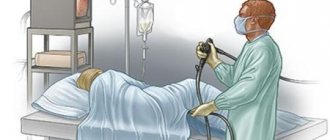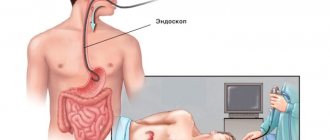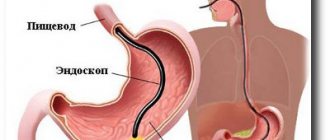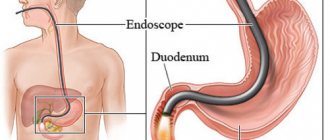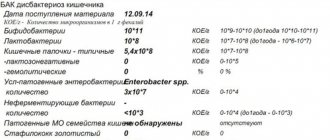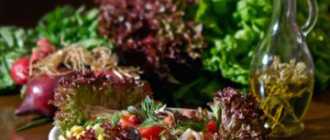Absorption of nutrients occurs in the intestine; the important role of this organ in the formation of immunity has also been proven relatively recently. In this regard, intestinal problems affect the general condition of the body and require immediate treatment. One of the diagnostic methods that makes it possible to identify many diseases is intestinal irrigoscopy.
What can be examined with intestinal irrigoscopy?
A healthy intestine on an X-ray with contrast has clear outlines with physiological bulges, it is evenly filled. What anatomical features of the organ are visible on x-ray, and what does intestinal irrigoscopy reveal?
Functional state of different parts of the intestine
In the intestine straightened with the help of liquid, it is clearly visible whether the appendix is able to function, how efficient the ascending colon and the descending rectum are, as well as the small intestine. Any pathologies will be immediately identified.
Size, location and diameter of the colon lumen
In the presence of abnormal narrowings and adhesions, the parameters of the colon lumen deviate from the norm. Irrigoscopy of the intestines gives an idea of their size and dislocation.
Elasticity and distensibility of intestinal walls
During irrigoscopy, the intestines are given a natural shape, and at the same time the elasticity of the walls is checked. The contrasting fluid that fills the intestines stretches its walls and shows where this function is impaired.
Condition of the intestinal mucosa
Thanks to the contrast, intestinal motility is visualized, as well as the condition of the mucous membrane and its relief. If the fullness is small, then only the internal relief is assessed. When it is strong, you can see abnormal changes, organ contours, inflammation, ulcers, tumors, etc.
Function of the intestinal valve
The intestinal valve is the part of the organ located between the ileum and large intestine. When functioning normally, the valve allows intestinal contents to flow in only one direction. During irrigoscopy, when the intestines are filled with contrast liquid, checking this parameter is not difficult.
What is irrigoscopy and why is it so important to prepare for it correctly?
Irrigoscopy is a method of examining the large intestine, which is prescribed to the patient if the attending physician cannot make a diagnosis by visual examination. Using irrigoscopy, you can diagnose various types of tumors, ulcers, etc.
There are two types of irrigoscopy:
- contrasting;
- double contrast.
The difference is that with the double method, air is injected along with the contrast agent. This allows for more detailed visualization.
The reliability of the results of irrigoscopy directly depends on how well the intestines are prepared for the examination.
Photo gallery
Irrigoscope device
Equipment for the procedure
Irrigoscopy results
The radiology doctor will tell you how to properly prepare for irrigoscopy on the visus-1 channel.
When is the procedure indicated?
Intestinal irrigoscopy is a complex examination that requires professional performance in a special diagnostic center with appropriate equipment. In addition, many patients find this x-ray procedure not the most pleasant, so only a doctor prescribes it if there is a justified need.
Discomfort and pain in the anal area
These symptoms can be caused by inflammation, as well as the presence of polyps and diverticula. Irrigoscopy of the intestines allows you to identify their dislocation and understand the causes of pain.
Bleeding from the rectum (hemorrhoids)
Hemorrhoids in themselves are not difficult to diagnose, but irrigoscopy allows you to identify the dislocation and size of hemorrhoids inside the rectum. This is the only way to find a complication of hemorrhoids in the form of thrombophlebitis. In the future, this will be a guide for the doctor when prescribing effective treatment.
Pathological discharge from the anus (mucus, pus)
The cause of discharge from the anus can be diverticula and ulcers, which are clearly visible in contrast. Also, intestinal irrigoscopy may show thickening of the walls, indicating tissue infiltration.
Persistent chronic constipation or diarrhea
Chronic constipation and diarrhea indicate a decrease or increase in intestinal tone. On x-ray they manifest themselves as an enlarged or reduced intestinal lumen. Also, intestinal irrigoscopy allows you to identify the cause of spasms.
What can't you eat?
- Bread
- Any sweets (even sweets of natural origin)
- Spicy, fried, salty, fatty or smoked foods
- Vegetables and fruits in their original form
- Mushrooms
- Greenery
- Canned foods
- Porridge (barley, oatmeal, etc.)
- Any fast food is strictly prohibited
- Spices and seasonings
- Carbonated drinks and alcohol
- Coffee and strong tea
- Legumes
- Cottage cheese
Diet
The patient preparing for barium enema should consist mainly of protein-rich foods:
- Chicken eggs
- Turkey, chicken and rabbit meat
- Semolina
- Fish meat (mostly white)
- Fermented milk products (yogurt, kefir)
- Green tea
Food should be taken at least 4-5 times a day in small portions. When preparing for the procedure, the volume of fluid consumed is of great importance. You need to drink a lot, about 2 liters of regular (still) water every day.
How to prepare properly?
The presence of feces in the intestines makes irrigoscopy difficult; preparation for the examination is mandatory. In order for the study results to be available for interpretation, it is very important to know how to prepare for intestinal irrigoscopy.
Diet
Preparation for intestinal irrigoscopy must begin 3 days in advance with a diet that prevents constipation and gas formation. The main diet should consist of dairy-free porridge, first courses, boiled vegetables and lean meat, eggs, fermented milk products, still water and unsweetened tea. Everything you can eat before irrigoscopy does not cause gas formation and is easily digested.
Colon cleansing (enemas, laxatives, etc.)
The day before the procedure, it is recommended to drink a laxative; castor oil (2 tablespoons) or a solution of magnesium sulfate (150 ml) is also suitable. After defecation, which usually occurs several hours later, you will need to do at least two enemas. In the morning before the procedure, it is necessary to do several enemas again until the intestines are completely cleansed before irrigoscopy.
How to prepare for the intestinal irrigoscopy procedure
Why is the irrigoscopy method convenient?
The most convenient research method in many respects is considered to be irrigoscopy - an X-ray method of obtaining images of the colon. This type of examination does not take long and gives the most complete picture of the organs of interest.
Considering the length of the intestine and the contraindications that may exist for colonoscopy, irrigoscopy is a good replacement.
As a result of irrigoscopy, the specialist sees a detailed picture of the intestine with various morphological changes, neoplasms, and various inflammatory processes.
Using this examination, you can evaluate the size of the organ lumen, the length and structure of the folds, and intestinal motility.
Due to its wide capabilities, intestinal irrigoscopy helps to identify many diseases; it is one of the main and inexpensive methods.
In order for irrigoscopy to give accurate results, mandatory preparation for its implementation is required - preliminary cleansing of the intestines.
Why is irrigoscopy needed, when is it prescribed?
Irrigoscopy is prescribed if the following signs are present:
- pain or discomfort in the groin or anus;
- frequent stomach and intestinal disorders - constipation or diarrhea;
- violation of the structure of the large intestine, fistulas, diverticulosis;
- deformation of the shape and change in the duration of the intestine - dolichosigma;
- inflammatory processes, Crohn's disease;
- discharge of various types (pus, mucus, blood) from the anus;
- suspicion of the presence of a neoplasm.
This study is also used to monitor the patient’s condition after intestinal resection surgery, to check postoperative scars or adhesions, to identify relapses of oncology, and to assess the independence of interintestinal anastomoses.
Preparation for the procedure has general rules and consists of two important components:
- slag-free diet;
- direct cleansing (using an enema or medications).
A slag-free diet and limiting the intake of medications (drugs that lower blood glucose levels, vitamins containing iron, non-steroidal anti-inflammatory drugs) are the first stage of preparation before irrigoscopy.
The next stage of preparation is cleansing with enemas to remove fecal residues or the use of special medications to facilitate this.
Slag-free diet
Following a diet, as the first step in preparing for irrigoscopy, should begin no less than two days before the scheduled examination. It is recommended to remove foods from the menu that may contribute to an increase in the amount of feces and increased flatulence.
All permitted products that are subject to heat treatment are well boiled or steamed. Dinner should be without the presence of solid food (or better yet, skip dinner altogether), and for breakfast on the day of the examination you can only eat liquid dishes (broth).
Spices and various seasonings are prohibited during the diet. It is definitely recommended to drink plenty of fluids, at least 2 liters per day. This could be weak black (herbal) tea, mineral water without carbon. You can add a little honey.
The last meal when preparing for irrigoscopy is allowed no later than 12 hours before the examination, but it is better to extend this interval to 20 hours.
Exclude from the diet:
| bran, wholemeal bakery products | eggs |
| mushrooms | broths; |
| legumes (beans, beans, peas, lentils) | semolina porridge; |
| some types of porridges (oatmeal, pearl barley, millet) | fermented milk products, except cottage cheese; |
| vegetables (potatoes, beets, carrots, radishes, tomatoes, onions, peppers, cabbage) and greens | boiled or steamed, poultry, beef, lean fish |
| fruits (apricots, grapes, oranges, apples, bananas, peaches) and berries, carbonated drinks and freshly squeezed juices | compotes and jelly |
| chocolate | biscuits, crackers |
| any types of conservation | fresh cucumbers |
Colon cleansing with enema
To completely cleanse the intestines, the next step in preparation for irrigoscopy is an enema. It requires an Esmarch mug and slightly cool water.
The water temperature should not be higher than 37 degrees, since very warm water can dissolve feces, which will make it difficult to completely remove them from the body. For better cleansing with an enema, you should drink 2 tbsp at lunch the day before the study.
spoons of castor oil or MgSO4 solution (magnesium sulfate - 30%) - 150 ml. In the evening, you should do 2 enemas at 8 and 10 pm, and in the morning on the day of the examination (at 7–8 o’clock) you should repeat the enema.
The enema cleansing process in preparation for the examination is carried out as follows: Esmarch’s mug is filled with 1.5–2 liters of water.
The tip is lubricated with Vaseline (baby cream) to avoid trauma to the anus and ensure a neat entrance. After inserting the tip, open the valve so that water begins to enter the body.
To reduce pain to a minimum, you do not need to apply a lot of pressure.
To carry it out independently at home, the procedure of cleansing with an enema, as a method of preparing for irrigoscopy, is inconvenient, so it is better if someone close to you helps the patient do it.
- After introducing water, you need to lie down on one side, then on the other side for several minutes, then repeat the procedure until the water used for rinsing becomes completely clear.
- It is allowed to add herbal infusions (for example, chamomile) to plain water to cleanse the intestines.
- If cleansing with an enema is contraindicated for some reason (hemorrhoids, inflammation in the intestines), then other cleansing methods are used.
Cleansing with an enema to prepare for an examination cannot be performed during pregnancy, menstruation, vaginal prolapse, lactation, stress, fever, high temperature, previous stroke (heart attack), heart failure, acute and chronic hemorrhoids, diabetes mellitus, grade 3 hypertension, inguinal hernias.
Colon cleansing with medications to prepare for the examination
How can you cleanse the intestines in preparation for irrigoscopy besides enemas? Cleansing the body without the use of enemas can also be done using medications. The most famous are Fortrans and Duphalac.
The drug "Fortrans", used to cleanse the intestines in preparation for the examination, provides high-quality preparation for the examination. But the taste of the diluted drug is not very pleasant, so to make it easier to use, lemon or orange juice is added to the drug solution.
The drug contains substances that have properties to cleanse the intestines: anhydrous sodium sulfate, sodium bicarbonate, macrogol, potassium and sodium chloride.
To use the drug correctly, it is necessary to calculate how much it will be needed for a particular person - since the amount of the required substance depends on the patient’s body weight. The substance is used at the rate of 1 sachet of Fortrans per 20-25 kg of patient weight. To prepare the solution, dissolve each sachet of the drug in 1 liter of water and drink 1 glass every quarter of an hour.
When using the drug “Fortrans” in preparation for the examination, it is also necessary to take into account the time of the irrigoscopy procedure.
Contraindications
Intestinal irrigoscopy is prescribed only if necessary, but in some cases it is contraindicated. Therefore, before the examination, an examination by a proctologist is required. He will decide whether the benefits of the procedure outweigh the harm from the side effects it causes.
During pregnancy
Intestinal problems during pregnancy are not uncommon. However, is it possible to do irrigoscopy during pregnancy? The answer is clear: no. X-rays by themselves are contraindicated for pregnant women, and filling the intestines with contrasting fluid can negatively affect the tone of the uterus. Therefore, during pregnancy it is better to find an alternative way to examine the intestines.
For pathologies of the cardiovascular system
Despite the complete painlessness of intestinal irrigoscopy, the patient experiences significant stress during the procedure. In severe pathologies of the cardiovascular system, the contrast agent can also cause damage to blood vessels. Therefore, irrigoscopy is undesirable for children.
In weakened patients in serious condition
A serious condition requiring bed rest can at least become an obstacle to intestinal irrigoscopy. This procedure puts a certain burden on the body, which is contraindicated in its weakened state.
If perforation of the intestinal wall is possible
If there is perforation of the intestinal walls, irrigoscopy can cause great harm to health, since contrast fluid from the intestine will enter the abdominal cavity. At the same time, the probability of a doctor’s error, although negligible, remains. If after the procedure there are sharp pains in the abdominal area, you must call an ambulance. The intestines may have been damaged.
Preparing for intestinal irrigoscopy: what to do at home
Intestinal irrigoscopy is an important diagnostic procedure that allows you to identify many different diseases. It is an X-ray examination with the introduction of a contrast agent into the intestinal lumen - a suspension of barium sulfate or water-soluble iodine-containing contrast.
The reliability of the results largely depends on how the preparation for intestinal irrigoscopy is carried out.
It must be completely freed of its contents; for this, a set of measures is used, including a special diet and intestinal cleansing.
The patient is given a contrast agent in the form of an enema, filling the entire colon; the doctor monitors this through an X-ray machine and takes pictures - irrigography.
When is preparation necessary?
Preparation for examination using irrigoscopy is a prerequisite, without which this procedure cannot be performed. It is prescribed when the patient has the following manifestations:
- bowel disorder - constipation, diarrhea;
- intestinal flatulence;
- abdominal pain of unknown origin;
- discharge of blood, mucus, pus with feces;
- suspicion of a congenital intestinal anomaly;
- postoperative adhesive disease of the abdominal cavity;
- chronic gastritis, pancreatitis with impaired peristalsis;
- inability to perform a colonoscopy (examination with a probe) due to a tumor or inflammatory process detected during sigmoidoscopy;
- for control after treatment for a malignant tumor;
- for examination before planned gynecological or urological surgery.
In all cases, preparation is necessary so that the contents of the colon do not interfere with its complete and uniform filling with contrast.
Nutritional considerations during preparation for the procedure
Products
2 days before the scheduled procedure, you must switch to a diet that does not contain toxins (waste). Products should be easily digestible, not irritate the digestive tract, and not cause flatulence.
You should completely exclude from your diet raw vegetables, fruits, berries, pearl barley, barley, millet and oatmeal, all legumes, coarse breads with bran, mushroom dishes, canned food, pickles, and smoked foods.
Recommended are meat and fish broths, soups without vegetables, boiled meat and fish, semolina porridge, omelettes, eggs in any form, unsalted cheese, and fermented milk products. The diet should also be gentle - small portions 5-6 times a day.
On the morning of the study, a light breakfast/snack is allowed, only in liquid form, and only if the doctor allows it in a particular case.
Drinking regime
During 2 days of dietary preparation, you should avoid drinks that cause irritation of the gastrointestinal tract and increased gas formation. These include alcoholic and carbonated drinks, whole milk, and strong coffee. You should also not consume vegetable juices or fruit juices with pulp.
Enema or laxatives?
Depending on his preferences, the patient should choose the most convenient method for cleansing the intestines. If all rules are followed, both methods are effective.
Cleansing with enemas
You will need an Esmarch mug or a combination heating pad.
The water should be at room temperature. Lemon juice quickly softens compressed feces. You can squeeze the juice of half a lemon into one liter of water.
Esmarch's mug is filled with water, then the tap is opened and the rubber tube is filled. The tap closes. The container is suspended a meter above the level of the place where the procedure will be performed. The most comfortable position is to lie on your side and pull your knees towards your head as much as possible.
It is difficult to carry out rinsing with enemas on your own. It is advisable to have someone help regulate the water pressure. With strong pressure, pain occurs in the colon. In this case, Esmarch's mug must be lowered lower. If water flows poorly, raise the container higher.
The day before the examination, two cleansing enemas are performed in the afternoon. 3-4 hours before the procedure, you need to drink a spoonful of castor oil or a solution of magnesium sulfate (25 g of powder in half a glass of water). After natural bowel movements, the enema is done twice, at 20 and 21 hours.
The next day in the morning the procedure is repeated. Clean rinsing water indicates that the intestines are cleansed.
In case of erosive and ulcerative lesions of the colon, tumors, an enema cannot be given.
The most popular medications for lavage (washing)
Fortrans
Softens intestinal contents, loosens fecal stones. Well tolerated by all patients, does not cause spastic pain or flatulence. Can be used during lactation.
The drug is contraindicated in heart failure, dehydration, intestinal obstruction, and significant damage to the mucous membrane.
To prepare for irrigoscopy you will need 3-4 sachets of the product, i.e., one sachet per 20 kg of weight. Patients with large body weight or long-term absence of stool will need 5-6 sachets.
The following algorithm for cleansing the intestines with Fortrans is recommended:
Irrigoscopy is scheduled for the morning.
Lunch no later than 14:00.
Reception of the solution begins at 16-17 hours. The sachet is diluted in a liter of water and drunk over an hour. It is not necessary to consume the entire portion at once. You can drink one glass every 15 minutes. Large amounts of liquid cause nausea; you can get rid of it by sucking a slice of lemon after each glass.
The procedure will take place after lunch.
Half of the dose of Fortrans is taken the day before at 18-19 hours. The remaining dose is taken the next day from 7 to 9 am.
The effect of the drug stops 3-5 hours after the last dose.
Fleet phospho-soda
A saline laxative that promotes water retention and increased peristalsis. Not recommended for patients with an increased risk of developing renal failure, elderly people, and nursing mothers.
One day before the procedure, only broths and clear drinks are consumed for breakfast, lunch and dinner. After breakfast, take the first bottle of the drug. It is diluted in 120 ml of water and washed down with one glass of liquid. After dinner, consisting of a glass of broth, a second bottle of Fleet phosphosoda is taken.
If irrigoscopy is scheduled for the afternoon, the first dose of the drug is taken after dinner, and the second after breakfast.
Lavacol
Available in powder form, which must be dissolved in 200 ml of water. To get rid of the unpleasant taste, you can add a little syrup or a spoonful of seedless jam. Take three liters of solution (15 sachets).
Lavacol is drunk no later than 21:00 if the examination is scheduled for the morning. If the procedure is carried out in the afternoon, the dose is divided into two doses and taken in the evening and at 6-7 am.
An inexpensive drug but, according to patient reviews, quite effective.
Duphalac
Available in the form of syrup. Softens the intestinal contents. The drug is approved for children and nursing mothers. On the day before the examination, two hours after lunch, drink 200 ml of syrup diluted in water. The product begins to act after 1-3 hours.
Each patient should consult with a specialist and discuss the lavage algorithm. Preparation for irrigoscopy will be successful if the patient follows all the doctor’s recommendations and consistently carries out the procedures.
Note!
The presence of symptoms such as:
- smell from the mouth
- stomach ache
- heartburn
- diarrhea
- constipation
- nausea, vomiting
- belching
- increased gas formation (flatulence)
If you have at least 2 of these symptoms, then this indicates a developing
gastritis or stomach ulcer.
These diseases are dangerous due to the development of serious complications (penetration, gastric bleeding, etc.), many of which can lead to
LETHAL
outcome. Treatment needs to start now.
Read the article about how a woman got rid of these symptoms by defeating their main cause. Read the material...
Irrigoscopy is a special method for examining the large intestine using contrast radiography. The essence of the technique is the introduction of a special contrast agent into the intestine, which helps to see pathological changes and diseases in the organ.
Indications for irrigoscopy
Irrigoscopy is extremely informative for diagnosing Hirschsprung's disease and diverticulosis. The research procedure is carried out if there is suspicion of:
- ulcerative colitis;
- penetration of foreign bodies into the intestinal cavity;
- rupture of the organ wall;
- intestinal obstruction.
Irrigoscopy is prohibited for patients in whom the contrast agent causes acute allergic reactions. The study should not be carried out on people during periods of exacerbation of chronic diseases or those suffering from infectious pathologies. During pregnancy and during breastfeeding, irrigoscopy is not prescribed.
Bowel cleansing before irrigoscopy
To cleanse the intestines before the procedure, you can resort to two methods:
- cleansing enemas;
- cleansing with medications.
If the patient wants to choose to cleanse the intestines at home using enemas, he needs to remember that before barium enema the enema is done several times:
- before bed the day before the examination;
- after natural bowel movement;
- two hours before the procedure.
For the first time, about a liter of water is injected into the intestines with an enema. The procedure must be repeated until the emerging liquid becomes completely clean.
The process of cleansing the intestines can also be carried out with the help of specialized pharmaceutical preparations.
They have different shapes:
Most doctors recognize drug cleansing of the stomach and intestines as more effective than the traditional method involving the use of an enema.
Experts recommend using the following drugs to cleanse the intestines before irrigoscopy:
- Fortrans;
- Lavacol;
- Duphalac;
- Fleet Phospho-soda;
- magnesium sulfate.
Before you start taking medications, you should consult a specialist and read the instructions.
Fortrans (from 114 rubles per sachet)
The method of using Fortrans is as follows: it is necessary to dilute one sachet per kilogram of weight in the appropriate amount of still water (one liter per sachet). Next, the liquid must be drunk within 3-4 hours. The effect after taking the first dose of the drug occurs after an hour and lasts about six to ten hours. The effect of the drug is based on softening the intestinal contents.
Most patients who took Fortrans to cleanse the intestines noted an unpleasant taste of the drug. However, doctors often recommend this remedy because of its high effectiveness.
Lavacol (from 183 rubles per pack)
The drug is available only in powder form. It is recommended to dilute one sachet per 200 ml of water, however, to achieve the effect necessary when preparing for irrigoscopy, the patient needs to drink 3 liters of water (15 sachets).
Contrary to erroneous belief, Lavacol does not cause dehydration, since it does not suck water from the body, but swells due to the liquid that was taken along with the drug.
Duphalac (from 300 rubles per bottle)
The drug is available in the form of syrup. The advantage of this product is the absence of contraindications for use by nursing women and children. The action is based on softening stool. Duphalac is taken by the patient once after the last meal of the day before the examination (lunch). The recommended dose is 200 ml of syrup, diluted in a small amount of water.
Flit Phospho soda (from 637 rubles per pack)
A laxative based on salts, due to which water is retained in the body and intestinal motility is enhanced. Release form: oral solution. The first portion should be taken in the morning after breakfast, the day before irrigoscopy. One bottle of the drug is diluted in 120 ml of liquid and washed down with a glass of water.
The patient takes the second dose of the drug after dinner (replaced with a glass of juice); the bottle must be diluted and taken in the same way as the morning portion.
Intestinal irrigography: how is the procedure performed?
The technique of the procedure is not complicated. The examination is painless and does not take much time. For these reasons, if serious diseases are suspected, intestinal irrigography is performed first. How is this research conducted? After performing a plain X-ray, the patient lies on his left side, his legs are pressed to his stomach, and his hands are behind his back. Using a special probe, 1 to 2 liters of barium suspension are injected into the rectal cavity. At this time, the patient changes position on the couch several times to evenly distribute the contrast agent. As the intestines fill, several x-rays are taken. The last of these is performed after the probe is withdrawn. To obtain a more accurate picture, a double contrast method is performed. For this purpose, after the procedure, air is pumped into the rectum (using an irrigoscopy apparatus) and a series of additional images are taken. Most often, this procedure is necessary when benign neoplasms and cancer are suspected.
